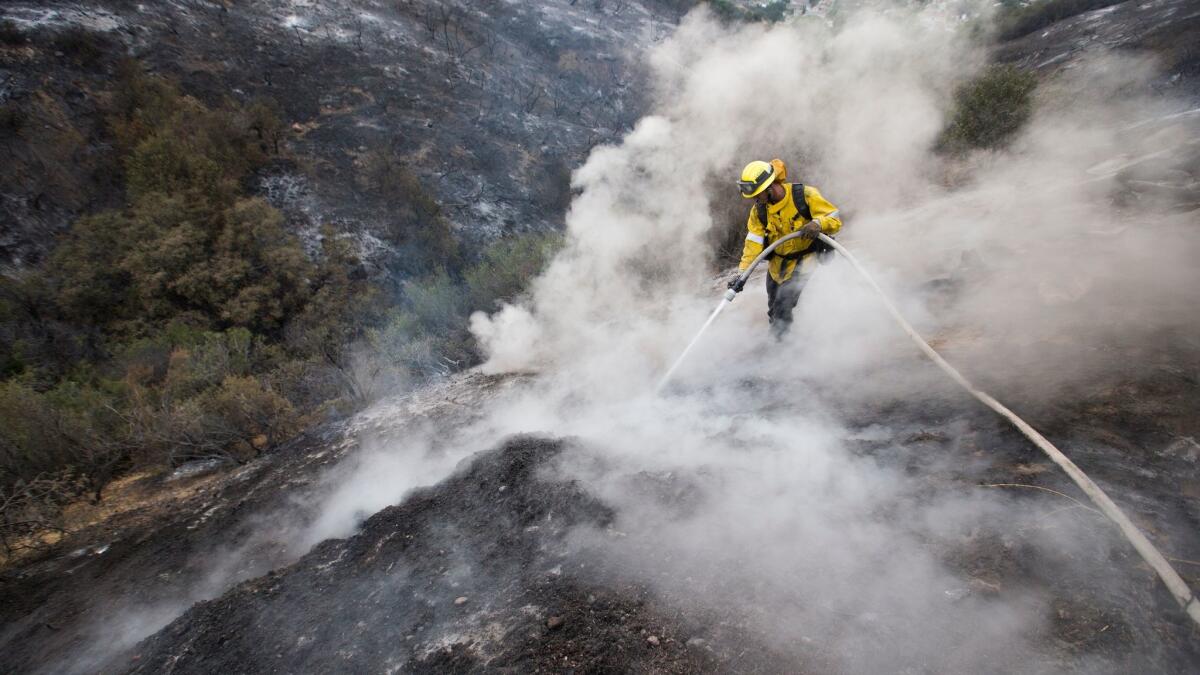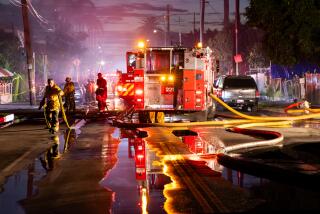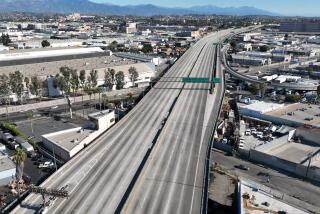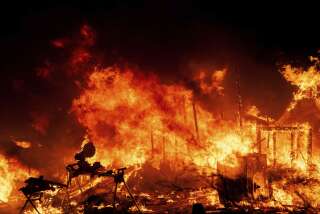La Tuna fire, city’s biggest by acreage, now 80% contained, officials say

A brush fire that triggered hundreds of evacuations in Glendale and Burbank as it tore across the Verdugo Mountains over the weekend was 80% contained Tuesday evening, Los Angeles fire officials said.
The La Tuna fire, which began Friday afternoon amid a sweltering heat wave, shut down miles of the 210 Freeway in the Sunland-Tujunga area for days as winds whipped the flames in all directions.
“We hit this hard, we hit it fast and we’ve done everything we can, and we’re proud to say out of those nearly 1,400 homes, only five have been destroyed and that we’ve been really able to jump from 30% to 70% containment,” Los Angeles Fire Department Capt. Erik Scott said early Tuesday. By 8 p.m., containment reached 80%.
The fire burned 7,194 acres, fire officials said. All lanes of the 210 Freeway were reopened Monday.
At the peak of the fire, more than 700 residents were evacuated throughout the area.
The evacuations have since been lifted and the cause of the fire remains unknown, but officials say there is no evidence of arson. The governor declared a state of emergency for Los Angeles County on Sunday at the urging of Los Angeles Mayor Eric Garcetti, who said it would ensure that state and federal assistance was provided as quickly as possible.
Garcetti described the fire as the biggest in the history of the city in terms of sheer acreage.
Fire officials repeated that statement on Monday.
“We’re confident, back to 1961, the Bel-Air fire, that this is the largest fire by acreage in the city of Los Angeles,” LAFD Chief Ralph Terrazas said.
Relief from the heat wave came for firefighters on Sunday, when temperatures dipped a bit and rain fell in some burn areas as monsoonal moisture from Tropical Storm Lidia moved into the region.
“The moisture that damped down the fire [Sunday] was from Lidia,” said NASA Jet Propulsion Laboratory climatologist Bill Patzert. “That was a gift from ... Lidia.”
Patzert said September is “the heat wave month,” so the risk of other fires will persist as brush, grasses and other vegetation continue to become dry and desiccated.
“The simple formula is that fire equals fuel, plus ignition, plus meteorology,” Patzert said Monday. After above-average rainfall last winter through February, March turned dry, he said.
“But the rainfall we did have really encouraged the brush and especially the grasses. … So we were primed for fires all over the Southland. And we’re definitely not done,” Patzert said. “The fire season is the Santa Ana winds season, and historically that’s October, with November being the peak of the old fire season.”
For breaking California news, follow @JosephSerna on Twitter.
Los Angeles Times staff writer Brittny Mejia contributed to this report.
UPDATES:
9:10 p.m.: This article was updated with new acreage and containment figures.
This article was originally published at 11:55 a.m.
More to Read
Start your day right
Sign up for Essential California for news, features and recommendations from the L.A. Times and beyond in your inbox six days a week.
You may occasionally receive promotional content from the Los Angeles Times.







